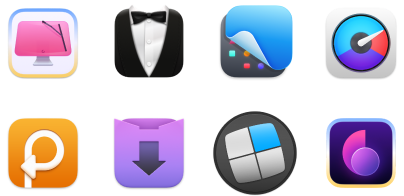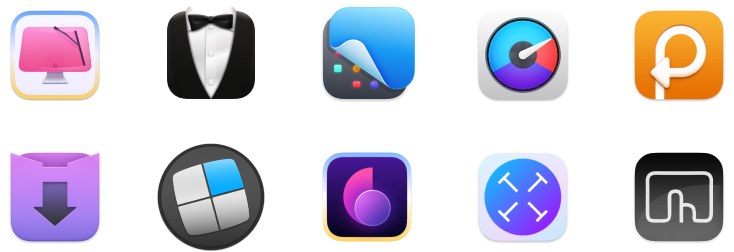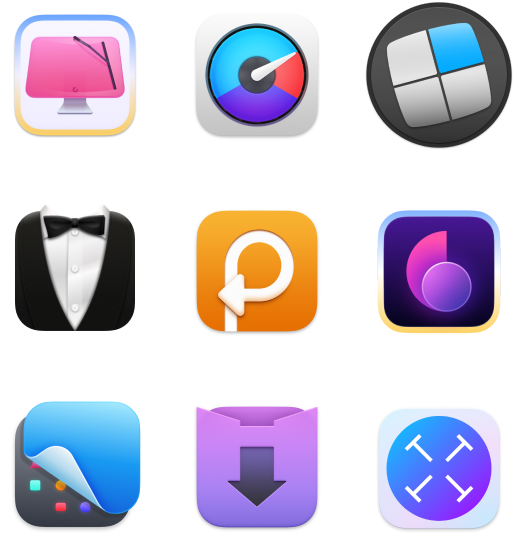How to safely backup iTunes to an external hard drive [3 quick methods]
Just a friendly reminder: Make sure you back up your files and then back them up again! Seriously, you can never be too safe.
According to IT Governance, approximately 21% of users have never created a backup folder, which means losing your iTunes backup location falls within that statistic. If you want to avoid being part of that percentage, read on to learn how to back up iTunes to an external drive.
What is iTunes?
iTunes is a media player and library app that used to be utilized for organizing, purchasing, and managing digital media, including music, movies, and apps. In 2019, after the macOS Catalina release, Apple discontinued iTunes and replaced it with Apple Music, Apple TV, and Podcasts.
So, without iTunes media folder, how do you sync or back it up to an external drive? Let me show you — it's super simple, just like it used to be.
Why back up iTunes Library to an external hard drive?
Cloud storage has proved to be a reliable place to backup data; however, backing up to an external drive gives you peace of mind, especially when it comes to important files (in my case, a playlist of my fav audiobooks that I keep those times when I need to unplug and unwind).
Here are the benefits of using external storage space for backups:
- No dependency on an internet connection
- Minimized risks of cyberattacks
- On-the-go backup access
- Large storage for one-time purchase only
If you're not keen on using an external hard drive (or just don't have one), there are some other options for backing up iTunes that might work even better. Check out Get Backup Pro — it's a solid app that’s tough enough to handle any hardware issues that might come up. It even syncs your backups automatically with the help of the Stealth Mode feature, almost like an iTunes backup extractor. This way, whenever you add new music, TV shows, or podcasts, you don’t have to worry about doing a manual backup again.

To ensure your MacBook data is safe, learn how to back up your Mac to an external hard drive.
Prepare your iTunes Library for backup
Before starting backup, make sure to organize your media files so they can be easily located on an external hard drive. For example, if you want to organize your Music app, follow these steps:
- Go to Finder > Applications > Music.
- Click File on the menu bar > Library.
- Choose Organize Library.
- Select Consolidate files.

With a consolidated library, you can easily keep track of all your files before and after backup. Follow the same instructions to do the same with Apple TV or Podcasts.
What are the steps to safely backup iTunes to an external hard drive?
Backing up your media files is pretty straightforward, and it all comes down to which method you prefer. No matter what you choose, each option is safe to use, so just pick the one that works best for you.
Learn more about the best Mac backup software to try this year.
Method 1: Manual backup using Finder
If you choose this method, don’t forget to consolidate your files first. This makes sure that all the files are stored in the Music folder.
To back up iTunes via Finder:
- Open Finder and click Go in the menu bar.
- Choose Go to Folder and type ~/Music/iTunes for macOS Mojave and earlier or ~/Music/Music/ for macOS Catalina and later.
- Connect your external drive to the Mac with a cable.
- Drag and drop the media folder into the external drive.

Method 2: Using Time Machine backup
If you’re running macOS Ventura or later, you can do backups using Time Machine. First, you must set up the storage device as your backup disk. To do so:
- Click the Apple menu> Choose System Settings.
- Click General > Time Machine.
- Click Add Backup Disk > Choose your connected storage device > Set Up Disk.
- Choose Back Up Now from the Time Machine menu bar icon.

Image source: support.apple.com
Time Machine automatically backs up your stuff every hour, and it also saves any updates you make to your iTunes library.
Method 3: Using Terminal
If you’re an advanced user, this method is for you. It requires you to know how to use commands, so just watch out when you type the wrong one.
To back up using Terminal:
- Open Finder > Applications > Utilities > Terminal.
- Type cp -R ~/Music/Music /Volumes/ExternalDriveName and press Return. Replace ExternalDriveName with the exact name of your external drive.
- To back up only new or modified files, use the rsync command. Type rsync -av ~/Music/Music /Volumes/ExternalDriveName and press Return.
- Check if files were successfully backed up on your external drive.

Can you save an iPhone backup to an external hard drive?
If you want to save local storage on your device or you lost access to your iCloud, you can also store iOS device backups on an external drive.
Follow these steps:
- Connect an external drive to your Mac and create a separate folder, such as “iOS backup.”
- Connect your iPhone to your Mac with a cable and open it via Finder’s sidebar.
- Under the General tab, click Manage Backups.
- Right-click on the needed backup > Show in Finder. You should see a list of all device backups.
- Drag and drop files from your device backup to an external drive.
How to backup iTunes to an external drive? [Solved]
Even though iTunes has been discontinued with the macOS Catalina release, you can still back up media files externally. It can be via Finder, Time Machine, or Terminal — each method is safe and reliable.
Backing up my files is super important to me, and I like having different options. One tool I really like is Get Backup Pro — it's been great for managing local backups of my essential files. The best thing about the tools I've mentioned is that you can try them, as well as 260 macOS and iOS other tools on Setapp. The platform offers apps for different purposes, such as productivity or creativity, and you can access all apps under a single subscription. Don’t wait and get a 7-day trial to test all tools that can come in handy!
FAQ
Can I backup iTunes to an external hard drive?
You can back up your iTunes (now called Music app) library to an external hard drive. To do so:
- Open Finder > Go > Go to Folder.
- Type ~/Music/Music for macOS Catalina and later, and copy it to the external drive.
- For added security, consolidate your files. Open the Music app and click File.
- Choose Library > Organize Library > Select Consolidate Files.
How do you backup Apple Photos to an external hard drive?
To back up the Apple Photos library:
- Connect the external hard drive to your Mac with a cable.
- Open Finder > Applications > Photos.
- Select the photos or albums to back up.
- In the menu bar, click File > Export > Export [number] Photos.
- Choose your preferred export settings (file format, quality, etc.).
- Choose the external hard drive as the destination > Export.
Can you save an iPhone backup to an external hard drive?
To save an iPhone backup to an external drive:
- Connect an external drive to your Mac.
- Connect your iPhone to your Mac and locate it in Finder’s sidebar.
- Choose iPhone, and click Manage Backups.
- Right-click on the backup > Show in Finder.
- Drag and drop files from your device backup to an external drive.
Alternatively, you can back up your iPhone via Get Backup Pro.
Can I transfer my iTunes library to a flash drive?
To transfer your iTunes (now Music) library to a flash drive:
- Connect the flash drive to your Mac.
- Open the Music app.
- In the menu bar, click Music > Preferences > Files and check the location of your library.
- Go to the Music Library folder.
- Copy the entire library folder to the flash drive’s new location.
- Safely eject the flash drive after the transfer is complete.





